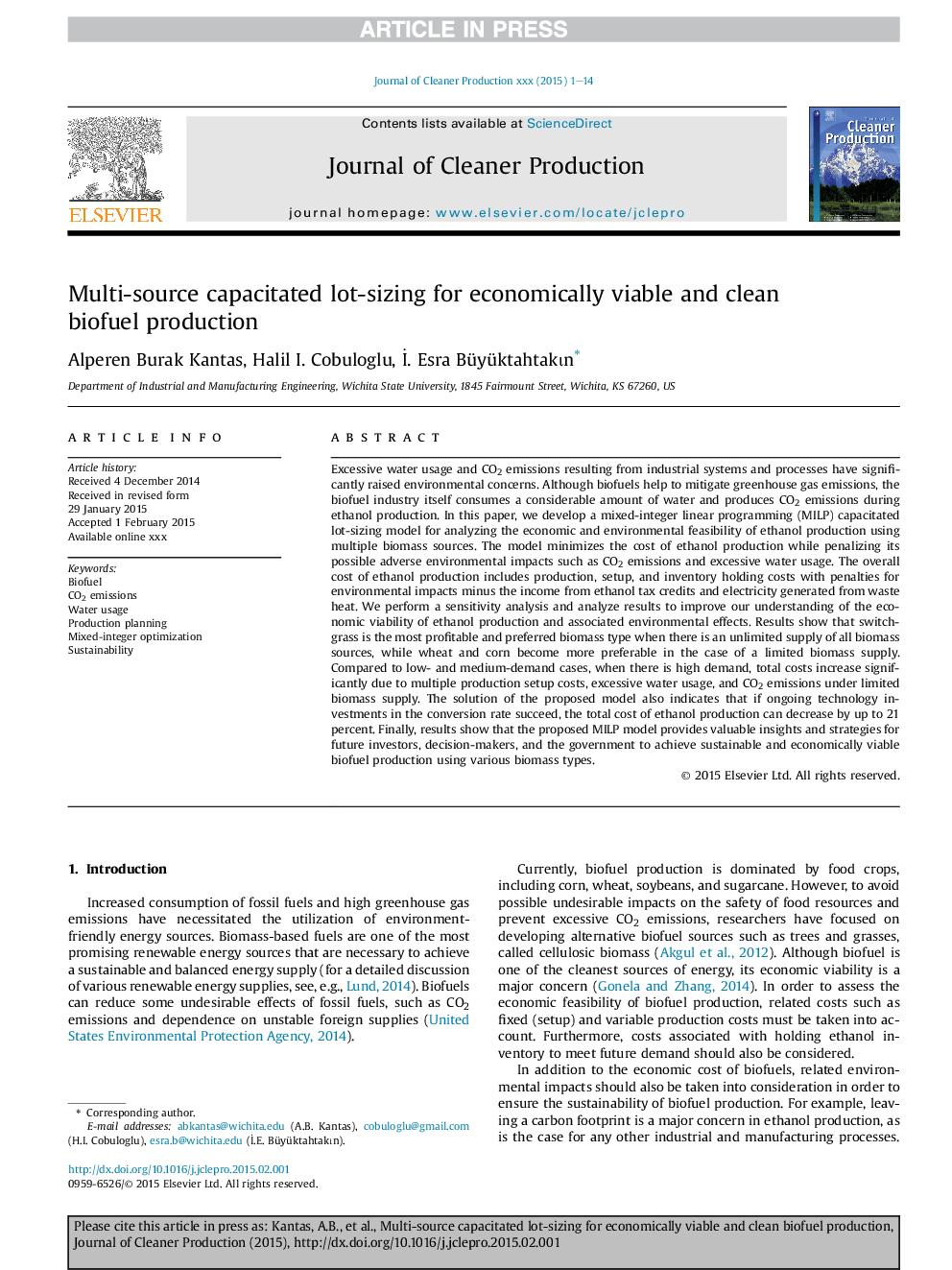| کد مقاله | کد نشریه | سال انتشار | مقاله انگلیسی | نسخه تمام متن |
|---|---|---|---|---|
| 8104562 | 1522152 | 2015 | 14 صفحه PDF | دانلود رایگان |
عنوان انگلیسی مقاله ISI
Multi-source capacitated lot-sizing for economically viable and clean biofuel production
ترجمه فارسی عنوان
چند منبع ظرفیتی برای اندازه گیری اقتصادی برای سوخت زیستی قابل قبول و تمیز
دانلود مقاله + سفارش ترجمه
دانلود مقاله ISI انگلیسی
رایگان برای ایرانیان
کلمات کلیدی
موضوعات مرتبط
مهندسی و علوم پایه
مهندسی انرژی
انرژی های تجدید پذیر، توسعه پایدار و محیط زیست
چکیده انگلیسی
Excessive water usage and CO2 emissions resulting from industrial systems and processes have significantly raised environmental concerns. Although biofuels help to mitigate greenhouse gas emissions, the biofuel industry itself consumes a considerable amount of water and produces CO2 emissions during ethanol production. In this paper, we develop a mixed-integer linear programming (MILP) capacitated lot-sizing model for analyzing the economic and environmental feasibility of ethanol production using multiple biomass sources. The model minimizes the cost of ethanol production while penalizing its possible adverse environmental impacts such as CO2 emissions and excessive water usage. The overall cost of ethanol production includes production, setup, and inventory holding costs with penalties for environmental impacts minus the income from ethanol tax credits and electricity generated from waste heat. We perform a sensitivity analysis and analyze results to improve our understanding of the economic viability of ethanol production and associated environmental effects. Results show that switchgrass is the most profitable and preferred biomass type when there is an unlimited supply of all biomass sources, while wheat and corn become more preferable in the case of a limited biomass supply. Compared to low- and medium-demand cases, when there is high demand, total costs increase significantly due to multiple production setup costs, excessive water usage, and CO2 emissions under limited biomass supply. The solution of the proposed model also indicates that if ongoing technology investments in the conversion rate succeed, the total cost of ethanol production can decrease by up to 21 percent. Finally, results show that the proposed MILP model provides valuable insights and strategies for future investors, decision-makers, and the government to achieve sustainable and economically viable biofuel production using various biomass types.
ناشر
Database: Elsevier - ScienceDirect (ساینس دایرکت)
Journal: Journal of Cleaner Production - Volume 94, 1 May 2015, Pages 116-129
Journal: Journal of Cleaner Production - Volume 94, 1 May 2015, Pages 116-129
نویسندگان
Alperen Burak Kantas, Halil I. Cobuloglu, Ä°. Esra Büyüktahtakιn,
